Birding near Mogi das Cruzes (1)
For the Saturday I had booked a guided tour with Carlos Henrique, a guide who is very familiar with the area near São Paulo. He did very well, he picked me up at the hotel at 6am, and dropped me off 12 hours later. Carlos had seen 89 different birds, of which I could remember 75 with the help of his list and my pictures. The other 14 were too far too see for me or I did not remember seeing them. In total, I made pictures of 67 species. Some of these are shown in the next few posts.
As a guide, he goes by eyesight and ears, ears in particular. To see some of the smaller songbirds, he would use sounds to encourage them to come out after he hears them sing. Or when he knows they should be in the area. This proves to be very effective: they come out to defend their territory. That is nice to take a picture, but it does reduce the time the birds can search for food. I guess once every so many weeks it does not hurt.
On our first stop near a little pond we already counted 18 species! This included a house wren, the only species that I have seen that also occurs in the Netherlands. Most birds were looking for insects: many species of flycatchers, swallows and martins.
The yellow-browed tyrant (Geelbrauwtiran) is one of the small flycatchers. A big far out unfortunately. I started the day with the 300mm lens, later I took more pictures with the 1.7 converter to get the birds closer.
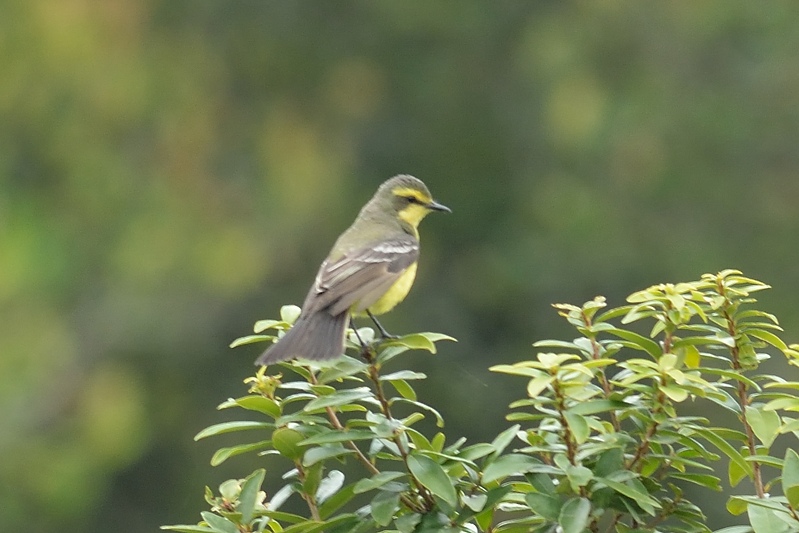 Yellow-browed tyrant (Geelbrauwtiran)
Yellow-browed tyrant (Geelbrauwtiran)An amazing bird is the fork-tailed flycatcher (Vorkstaartkoningstiran), with tails feathers that are as long as the bird itself is. They can spread the feathers in a fork, hence the name.
 Fork-tailed flycather / Vorkstaartkoningstiran
Fork-tailed flycather / VorkstaartkoningstiranApril is spring in São Paulo, which means many birds singing and marking their territory. This chestnut-capped blackbird (Bruinkaptroepiaal) works pretty hard in the top of a tree.
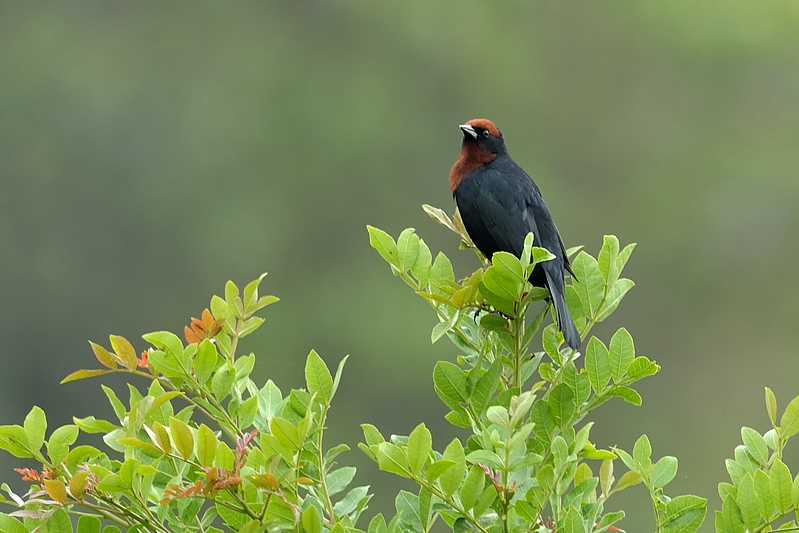 Chestnut-capped blackbird (Bruinkaptroepiaal)
Chestnut-capped blackbird (Bruinkaptroepiaal)Our next stop was near farmland. The whole area has mostly small-scale farming, with a lot of trees and marshes in between. The picazuro pigeon (Picazuroduif) was easy to spot on the powerlines.
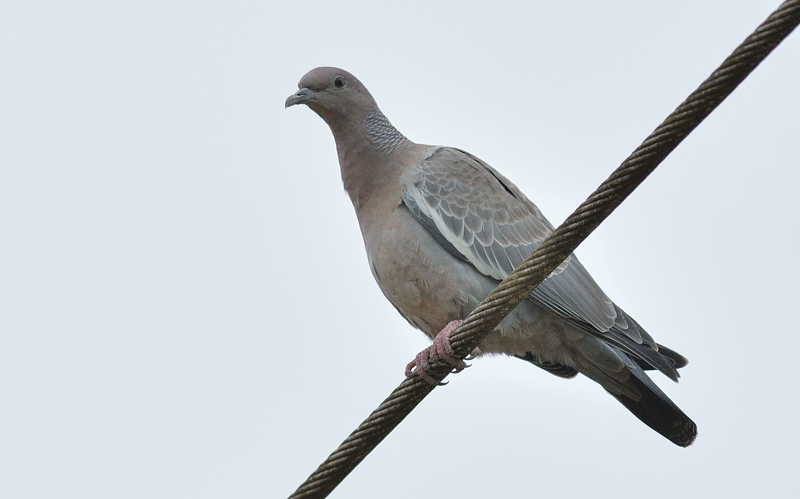 Picazuro pigeon (Picazuroduif)
Picazuro pigeon (Picazuroduif)In the bushes next to the dirt road we find many birds. The Rufous-capped antshrike (Roodkapmierklauwier) was the first to show up.
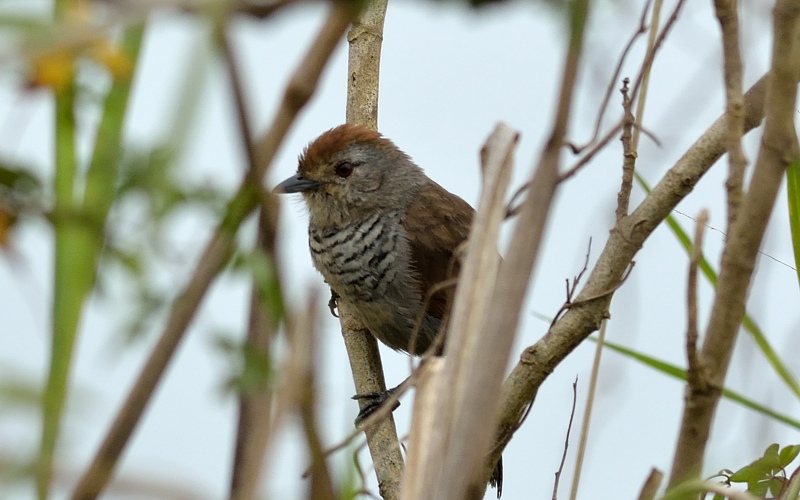 Rufous-capped antshrike (Roodkapmierklauwier)
Rufous-capped antshrike (Roodkapmierklauwier)We also saw the masked yellowthroat (evenaarmaskerzanger), white-bellied seedeater (witbuikdikbekje) and rufous-collared sparrow (roodkraaggors). The latter species is very common in the area.
The hooded tanagers (Kaptangares) were very cooperative in posing for us. We saw them quite a bit during the day.
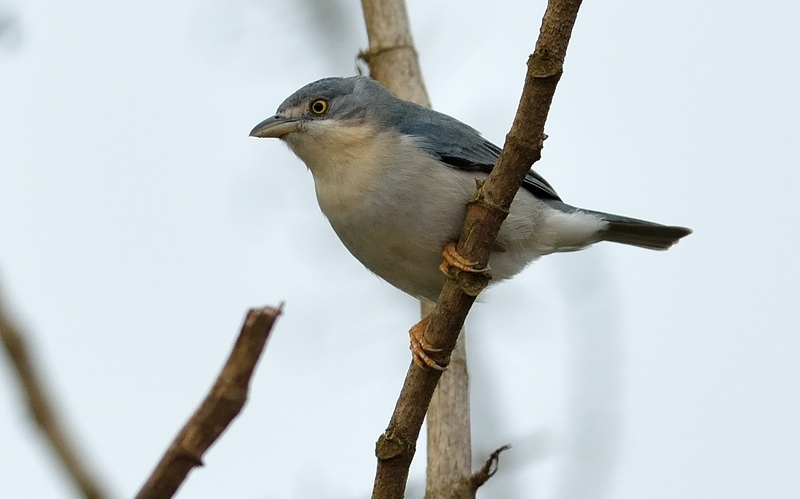 Hooded tanager (Kaptangare)
Hooded tanager (Kaptangare)Probably the best picture from this area is from the orange-brested thornbird (oranjeborststekelkruin), spying from a bush. This is one of the birds that came out when a his song was played for him.
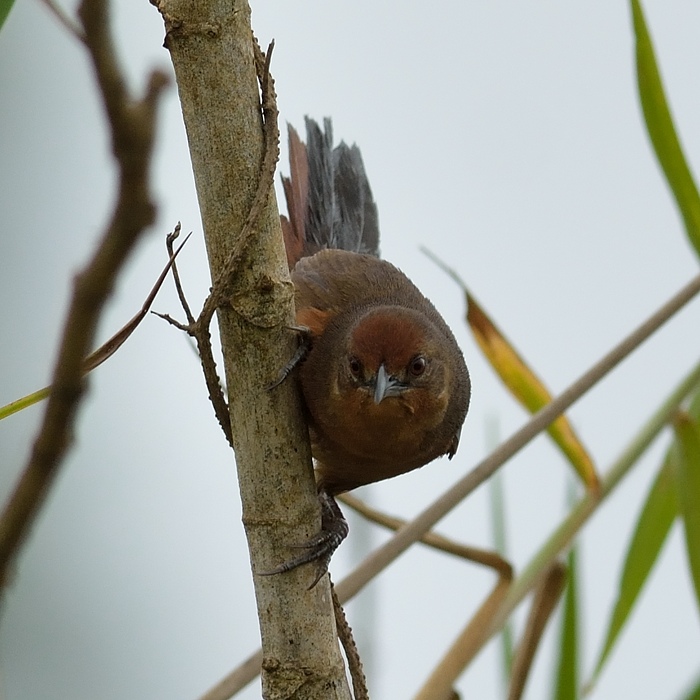 Orange-brested thornbird (Oranjeborststekelkruin)
Orange-brested thornbird (Oranjeborststekelkruin)To be continued on the next post …
